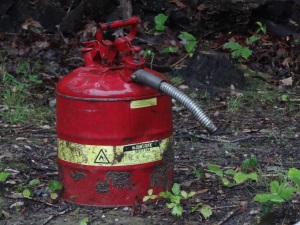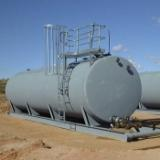Budget Hawks Debate Spending on US Navy Biofuel Program
In this age of debt ceilings and fiscal cliffs, some people aren't too happy that the Navy is spending $27 a gallon on biofuels for its diesel...

Some comments today about biodiesel fuels and biodiesel problems. It’s now been ten years since production and use of biodiesel exploded in the mid-2000s, partly due to the federal tax credits afforded for renewable fuels.
 Biodiesel isn’t on the mind of the average driver. They probably think it’s something people use out in the Midwest, but not where they’re at. Not true at all. Virtually all on-road diesel fuel contains up to 5% biodiesel. It’s not labeled as such, but it’s in there. They’re not required to disclose the biodiesel content because having that level of biodiesel content doesn’t cause the diesel fuel to miss on any of the essential specifications. Legally, a fuel that meets the requirement of the ASTM D975 specification is “diesel fuel”. So you’re very likely using biodiesel without even knowing it.
Biodiesel isn’t on the mind of the average driver. They probably think it’s something people use out in the Midwest, but not where they’re at. Not true at all. Virtually all on-road diesel fuel contains up to 5% biodiesel. It’s not labeled as such, but it’s in there. They’re not required to disclose the biodiesel content because having that level of biodiesel content doesn’t cause the diesel fuel to miss on any of the essential specifications. Legally, a fuel that meets the requirement of the ASTM D975 specification is “diesel fuel”. So you’re very likely using biodiesel without even knowing it.
Make no mistake, the story’s not all bad with biodiesel. Not by any means. They put it in there for a reason. It’s a renewable fuel, so it helps us all use less crude oil. It reduces emissions because it burns cleaner. Perhaps most importantly, it fixes ULSD’s lubricity problem.
The problems that biodiesel brings with it can give reason for pause. Microbes love it as a fuel source, whether by itself or mixed into regular diesel fuel in small percentages (kind of like the situation now).
And it attracts water. That’s interesting to consider because ultra-low sulfur diesel fuel itself also attracts water to a greater extent than diesel fuels of the past. This means the diesel fuel everyone’s using now has much greater affinity for water attraction than ever before.
Water is bad for today’s common rail diesel engine technologies, it makes the fuel more acidic (due to hydrolysis reactions in the biodiesel), and it provides an essential element to sustain microbial growth in the fuel. Fuel microbes are a ticking time bomb in stored diesel fuels across the country, and it doesn’t help when virtually all stored diesel fuel has at least 2-5% biodiesel in it to begin with.
If you’re up north, then you also have to contend with biodiesel gelling in the winter. All diesel fuel gels in colder weather because of the paraffin wax content that comes from the crude oil it’s made from. When you add in a portion of biodiesel, it makes the gelling problem worse. How much worse depends on how much biodiesel you’re adding and what it’s made from. Something to keep in mind if you’re a diesel fuel user as the winter cold sets in.
This post was originally published on 9/10/2013 and has been updated for accuracy and timeliness.
In this age of debt ceilings and fiscal cliffs, some people aren't too happy that the Navy is spending $27 a gallon on biofuels for its diesel...

Fleets and businesses aren’t the only people who need to store fuel. Many consumers regularly keep smaller volumes of fuel at home, for use in lawn...

1 min read
With diesel prices still sky-high compared to years past, it's more important than ever for large-scale diesel users to be on top of the trends in...